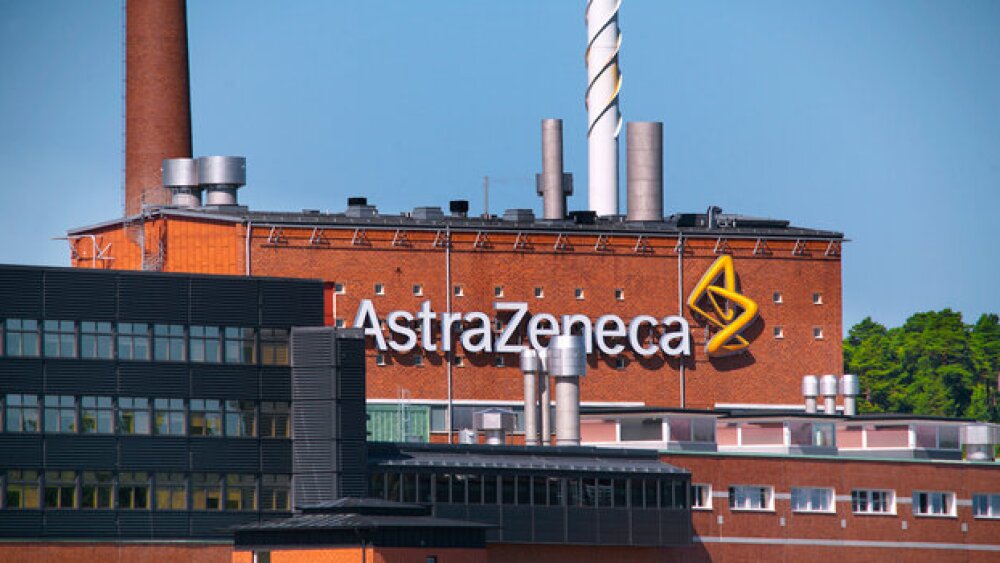Staying up-to-date has never been simpler. Sign up for the free GenePool newsletter today!
Salisbury, UK, 15th August, 2013: NanoSight reports on how Nanoparticle Tracking Analysis, NTA, is being used at St George's, University of London, to explore extracellular vesicles as a potential source of biomarkers, by identifying proteins or peptides differentially expressed between healthy subjects and patients with rare inherited diseases
St George's, University of London, is the UK's only independent medical and healthcare higher education institution. Dr Bridget Bax is a senior research fellow in the Clinical Sciences Division where the main focus of her group's research is to improve the understanding of the pathogenic mechanisms of rare inherited diseases and to develop novel therapies for translation into the clinical setting. One of their major areas of interest is the identification and validation of biomarkers in patients with the rare and fatal disease mitochondrial neurogastrointestinal encephalomyopathy (MNGIE). They are currently exploring the use of extracellular vesicles as source of biomarkers by identifying proteins or peptides differentially expressed between healthy subjects and patients with MNGIE. The goals of this work are three-fold: to understand the pathophysiological mechanisms and metabolic derangements observed in patients with MNGIE; to provide a means of monitoring more effectively clinical and biochemical response to therapy; and to enable the tracking of disease progression in diagnosed patients.
Describing her work, Dr Bax said "We have used several methods in the lab to isolate both exosomes and microparticles. We needed a reproducible method that would allow us to i) quantitate and size the extracellular vesicles we isolated and ii) determine whether the isolation technique employed affected these parameters. Nanoparticle Tracking Analysis has allowed us to quantify extracellular vesicles with diameters in the range of 50 to 1000 nm. This was particularly important for us because we specifically wanted to study exosomes which have a diameter ranging from 40 to 100 nm."
Prior to using NTA, initially the group used electron microscopy and fluorescence-activated cell sorting (FACS), a biophysical technique used in flow cytometry. Using FACS, Dr Bax said "We were unable to detect exosomes and found that a significant number of microparticles were missed due to not detecting vesicles with a diameter of less than 300 nm. Although it was possible to size extracellular vesicles using electron microscopy, this is a time intensive technique and has the potential disadvantages of causing shrinkage."
Dr Bax went on to discuss her thoughts on using NTA: "The benefits are the ability to detect particles within the size range of interest. NTA uses small sample volumes which is extremely important in terms of the rare diseases we study. We find the system easy to use."
To find out about the company and to learn more about particle characterization using NanoSight's unique Nanoparticle Tracking Analysis solutions, visit http://www.nanosight.com/ and register to receive the next issue of NanoTrail, the company's electronic newsletter.
About NanoSight:
NanoSight delivers the world's most versatile and proven multi-parameter nanoparticle analysis in a single instrument.
NanoSight's "Nanoparticle Tracking Analysis" (NTA) detects and visualizes populations of nanoparticles in liquids down to 10 nm, dependent on material, and measures the size of each particle from direct observations of diffusion. Additionally, NanoSight measures concentration and a fluorescence mode differentiates suitably-labelled particles within complex background suspensions. Zeta potential measurements are similarly particle-specific. It is this particle-by-particle methodology that takes NTA beyond traditional light scattering and other ensemble techniques in providing high-resolution particle size distributions and validates data with information-rich video files of the particles moving under Brownian motion.
This simultaneous multiparameter characterization matches the demands of complex biological systems, hence its wide application in development of drug delivery systems, of viral vaccines, and in nanotoxicology. This real-time data gives insight into the kinetics of protein aggregation and other time-dependent phenomena in a qualitative and quantitative manner. NanoSight has a growing role in biodiagnostics, being proven in detection and speciation of nanovesicles (exosomes) and microvesicles.
NanoSight has installed more than 600 systems worldwide with users including BASF, GlaxoSmithKline, Merck, Novartis, Pfizer, Proctor and Gamble, Roche and Unilever together with the most eminent universities and research institutes. NanoSight's technology is validated by 850+ third party papers citing NanoSight results. NanoSight's leadership position in nanoparticle characterization is consolidated further with publication of an ASTM International standard, ASTM E2834, which describes the NTA methodology for detection and analysis of nanoparticles. For more information, visit http://www.nanosight.com/.
For further information:
Please contact NanoSight direct or their marketing agency, Talking Science:
NanoSight Limited
Minton Park
London Road
Amesbury SP4 7RT UK
T +44(0)1980 676060
F +44(0)1980 624703
www.nanosight.com
sarah.newell@nanosight.com
Talking Science Limited
39 de Bohun Court
Saffron Walden
Essex CB10 2BA UK
T +44(0)1799 521881
M +44(0)7843 012997
www.talking-science.com
jezz@talking-science.com
Help employers find you! Check out all the jobs and post your resume.
Salisbury, UK, 15th August, 2013: NanoSight reports on how Nanoparticle Tracking Analysis, NTA, is being used at St George's, University of London, to explore extracellular vesicles as a potential source of biomarkers, by identifying proteins or peptides differentially expressed between healthy subjects and patients with rare inherited diseases
St George's, University of London, is the UK's only independent medical and healthcare higher education institution. Dr Bridget Bax is a senior research fellow in the Clinical Sciences Division where the main focus of her group's research is to improve the understanding of the pathogenic mechanisms of rare inherited diseases and to develop novel therapies for translation into the clinical setting. One of their major areas of interest is the identification and validation of biomarkers in patients with the rare and fatal disease mitochondrial neurogastrointestinal encephalomyopathy (MNGIE). They are currently exploring the use of extracellular vesicles as source of biomarkers by identifying proteins or peptides differentially expressed between healthy subjects and patients with MNGIE. The goals of this work are three-fold: to understand the pathophysiological mechanisms and metabolic derangements observed in patients with MNGIE; to provide a means of monitoring more effectively clinical and biochemical response to therapy; and to enable the tracking of disease progression in diagnosed patients.
Describing her work, Dr Bax said "We have used several methods in the lab to isolate both exosomes and microparticles. We needed a reproducible method that would allow us to i) quantitate and size the extracellular vesicles we isolated and ii) determine whether the isolation technique employed affected these parameters. Nanoparticle Tracking Analysis has allowed us to quantify extracellular vesicles with diameters in the range of 50 to 1000 nm. This was particularly important for us because we specifically wanted to study exosomes which have a diameter ranging from 40 to 100 nm."
Prior to using NTA, initially the group used electron microscopy and fluorescence-activated cell sorting (FACS), a biophysical technique used in flow cytometry. Using FACS, Dr Bax said "We were unable to detect exosomes and found that a significant number of microparticles were missed due to not detecting vesicles with a diameter of less than 300 nm. Although it was possible to size extracellular vesicles using electron microscopy, this is a time intensive technique and has the potential disadvantages of causing shrinkage."
Dr Bax went on to discuss her thoughts on using NTA: "The benefits are the ability to detect particles within the size range of interest. NTA uses small sample volumes which is extremely important in terms of the rare diseases we study. We find the system easy to use."
To find out about the company and to learn more about particle characterization using NanoSight's unique Nanoparticle Tracking Analysis solutions, visit http://www.nanosight.com/ and register to receive the next issue of NanoTrail, the company's electronic newsletter.
About NanoSight:
NanoSight delivers the world's most versatile and proven multi-parameter nanoparticle analysis in a single instrument.
NanoSight's "Nanoparticle Tracking Analysis" (NTA) detects and visualizes populations of nanoparticles in liquids down to 10 nm, dependent on material, and measures the size of each particle from direct observations of diffusion. Additionally, NanoSight measures concentration and a fluorescence mode differentiates suitably-labelled particles within complex background suspensions. Zeta potential measurements are similarly particle-specific. It is this particle-by-particle methodology that takes NTA beyond traditional light scattering and other ensemble techniques in providing high-resolution particle size distributions and validates data with information-rich video files of the particles moving under Brownian motion.
This simultaneous multiparameter characterization matches the demands of complex biological systems, hence its wide application in development of drug delivery systems, of viral vaccines, and in nanotoxicology. This real-time data gives insight into the kinetics of protein aggregation and other time-dependent phenomena in a qualitative and quantitative manner. NanoSight has a growing role in biodiagnostics, being proven in detection and speciation of nanovesicles (exosomes) and microvesicles.
NanoSight has installed more than 600 systems worldwide with users including BASF, GlaxoSmithKline, Merck, Novartis, Pfizer, Proctor and Gamble, Roche and Unilever together with the most eminent universities and research institutes. NanoSight's technology is validated by 850+ third party papers citing NanoSight results. NanoSight's leadership position in nanoparticle characterization is consolidated further with publication of an ASTM International standard, ASTM E2834, which describes the NTA methodology for detection and analysis of nanoparticles. For more information, visit http://www.nanosight.com/.
For further information:
Please contact NanoSight direct or their marketing agency, Talking Science:
NanoSight Limited
Minton Park
London Road
Amesbury SP4 7RT UK
T +44(0)1980 676060
F +44(0)1980 624703
www.nanosight.com
sarah.newell@nanosight.com
Talking Science Limited
39 de Bohun Court
Saffron Walden
Essex CB10 2BA UK
T +44(0)1799 521881
M +44(0)7843 012997
www.talking-science.com
jezz@talking-science.com
Help employers find you! Check out all the jobs and post your resume.




